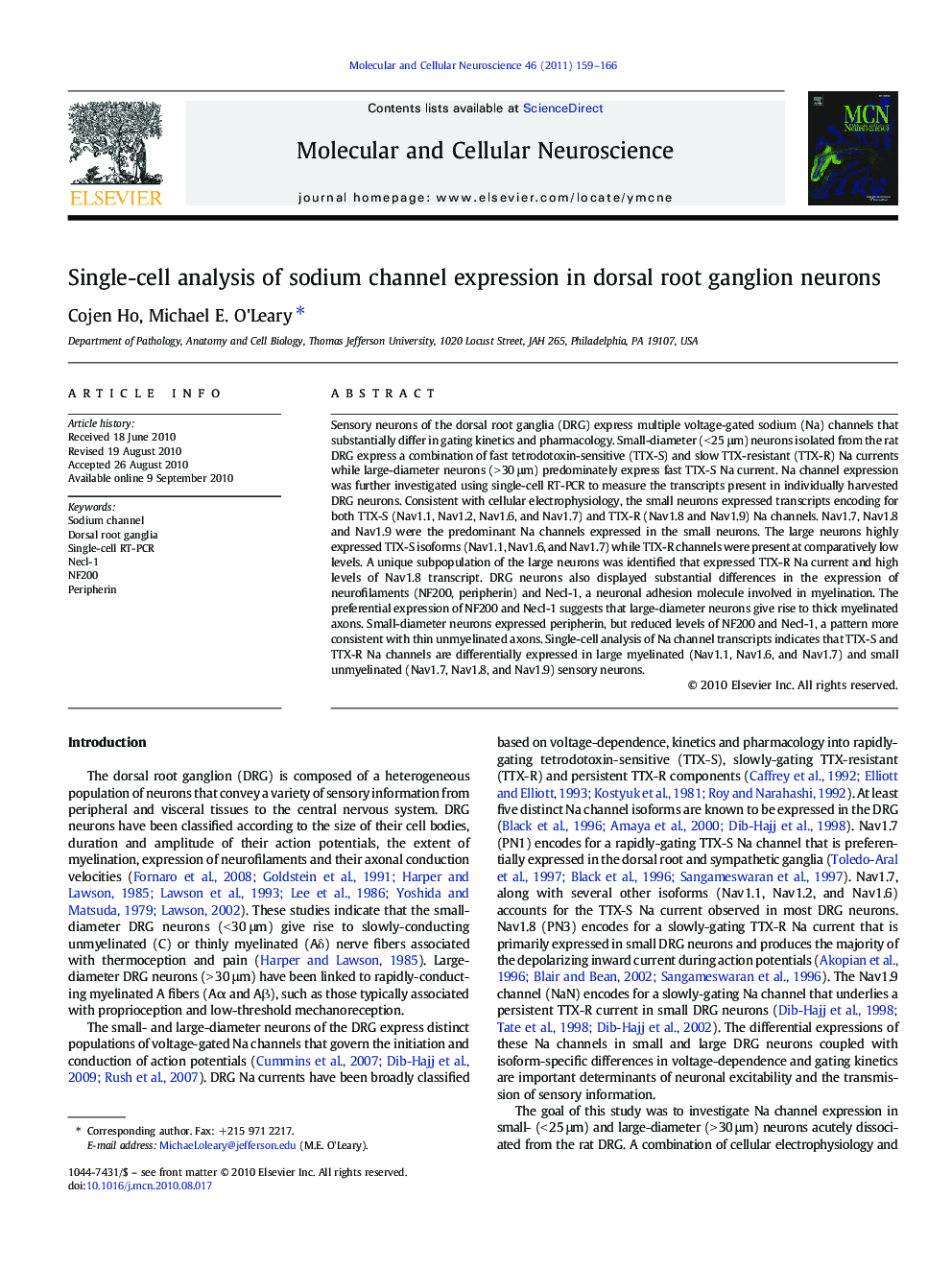| Article ID | Journal | Published Year | Pages | File Type |
|---|---|---|---|---|
| 10956633 | Molecular and Cellular Neuroscience | 2011 | 8 Pages |
Abstract
Sensory neurons of the dorsal root ganglia (DRG) express multiple voltage-gated sodium (Na) channels that substantially differ in gating kinetics and pharmacology. Small-diameter (< 25 μm) neurons isolated from the rat DRG express a combination of fast tetrodotoxin-sensitive (TTX-S) and slow TTX-resistant (TTX-R) Na currents while large-diameter neurons (> 30 μm) predominately express fast TTX-S Na current. Na channel expression was further investigated using single-cell RT-PCR to measure the transcripts present in individually harvested DRG neurons. Consistent with cellular electrophysiology, the small neurons expressed transcripts encoding for both TTX-S (Nav1.1, Nav1.2, Nav1.6, and Nav1.7) and TTX-R (Nav1.8 and Nav1.9) Na channels. Nav1.7, Nav1.8 and Nav1.9 were the predominant Na channels expressed in the small neurons. The large neurons highly expressed TTX-S isoforms (Nav1.1, Nav1.6, and Nav1.7) while TTX-R channels were present at comparatively low levels. A unique subpopulation of the large neurons was identified that expressed TTX-R Na current and high levels of Nav1.8 transcript. DRG neurons also displayed substantial differences in the expression of neurofilaments (NF200, peripherin) and Necl-1, a neuronal adhesion molecule involved in myelination. The preferential expression of NF200 and Necl-1 suggests that large-diameter neurons give rise to thick myelinated axons. Small-diameter neurons expressed peripherin, but reduced levels of NF200 and Necl-1, a pattern more consistent with thin unmyelinated axons. Single-cell analysis of Na channel transcripts indicates that TTX-S and TTX-R Na channels are differentially expressed in large myelinated (Nav1.1, Nav1.6, and Nav1.7) and small unmyelinated (Nav1.7, Nav1.8, and Nav1.9) sensory neurons.
Related Topics
Life Sciences
Biochemistry, Genetics and Molecular Biology
Cell Biology
Authors
Cojen Ho, Michael E. O'Leary,
